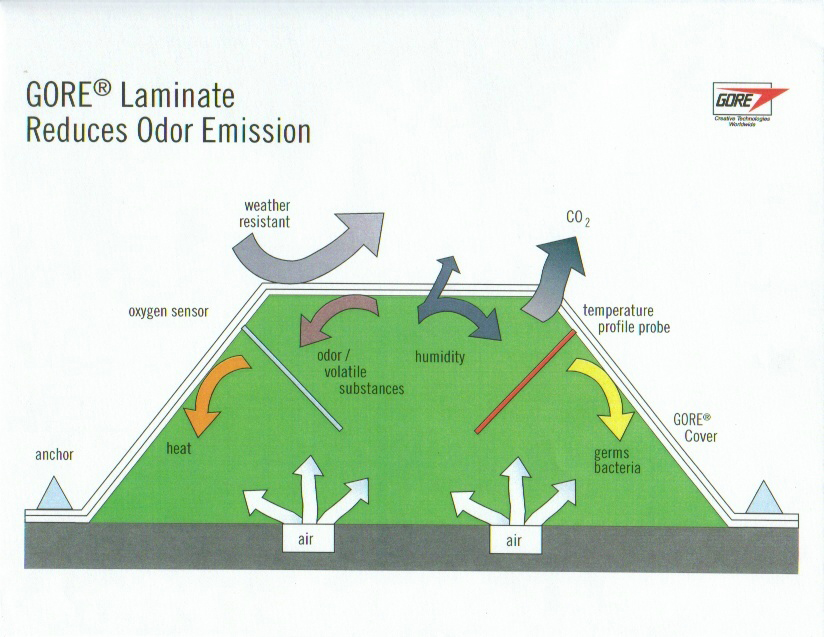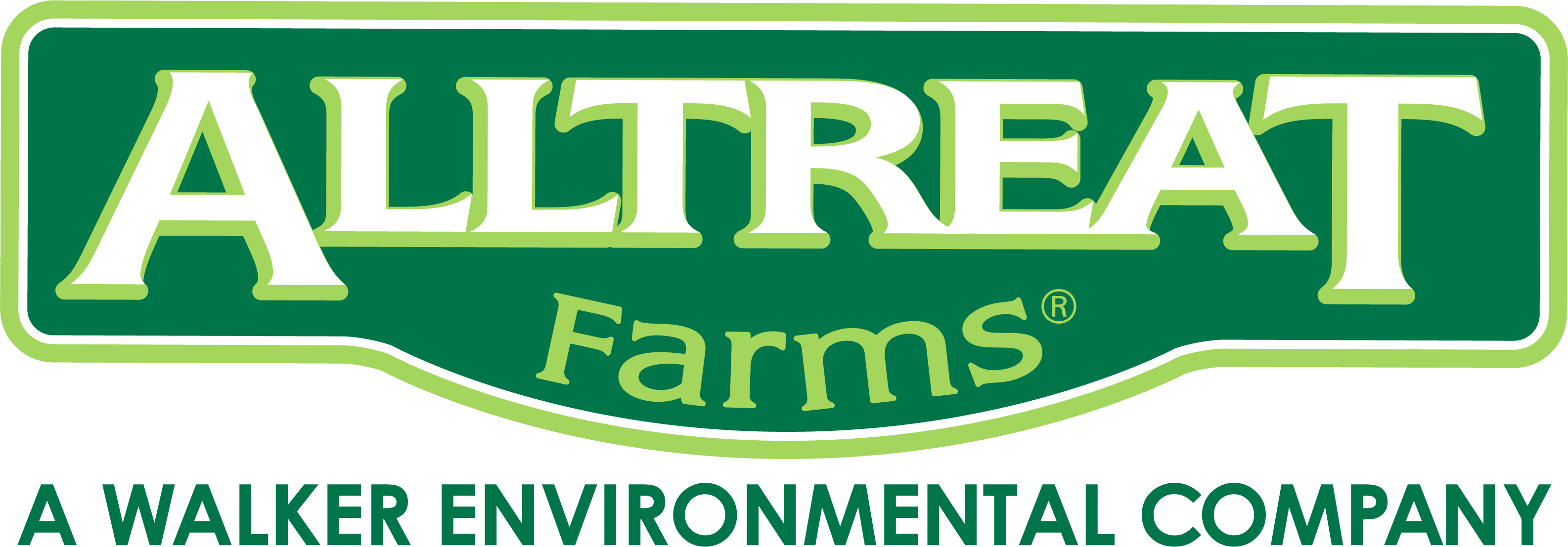Gore® Cover System
THE W.L. GORE COMPOST SYSTEM TECHNOLOGY

In 2004 All Treat Farms installed its first phase of a Gore Cover Composting System. Phase II was operational in 2008. All Treat Farms currently operates a 32 row system, capable of processing 80,000MT of organics. The following information details the system and how it functions.
Increasing pressures from regulatory bodies and the public on composting sites to contain and treat odours and other emissions led W.L. Gore to research innovations for compost systems and equipment. The result was the development and introduction in Germany of an enclosed aerated static pile composting system in 1995 by W.L. Gore. The system uses a cover made out of a Gore-Tex membrane embedded between two heavy fabric layers. The significance of the use of Gore-Tex fiber is its wide variety of properties. It is chemically inert, has a low friction coefficient, functions within a wide temperature range, does not age and is weather durable. It is also porous, air permeable, extremely strong, hydrophobic and biocompatible.
While the “Gore Cover” is an integral part of the technology, the system itself has five components: the covers, controls, aeration (pipes or ducts on or in the floor), a handling device for the covers and technical expertise. The main distinguishing factor of the Gore technology from other composting systems is that there is only one “reactor”, whereas most enclosed composting systems have one building designed to optimize the composting process and another location designed to minimize the side effects (such as a biofilter). The Gore Cover on the other hand, is permeable to gaseous substances but retains odour emissions.
The Gore Cover System utilizes positive aeration, control and its specially designed Gore-Tex cover to create an enclosed system that controls odours, microorganisms and creates a consistent process unaffected by outside environmental conditions. Medium pressure aerators connect to in-floor aeration ducts and stainless steel probes inserted into the pile monitor oxygen and temperature parameters. The data is relayed to, and stored in, a computer that controls the aerators to keep pile conditions consistent.
After a pile is constructed, the Gore Cover, is pulled over the pile. The Gore Cover protects the pile from weather conditions while allowing the release of carbon dioxide. These controlled conditions allow for a consistent compost to be produced without the risk of damp pockets, resulting in anaerobic conditions that create, increased odours.
Odour control is significantly improved under the Gore Cover System in the three following ways:
1. Prevention of anaerobic air pockets
2. The Gore Cover acting as a physical barrier against gas escaping from the decomposing pile
3. Controlled condensation on the interior of the cover.
A fine film of condensation develops during the composting process that collects on the inside of the cover. The moisture helps to dissolve the gases. The condensation then drips back onto the pile, where it continues to be broken down by the composting process.
In addition to the benefit of increased odour control, the Gore Cover System will provide All Treat with the opportunity to accept more organics from a wider customer-base because of the system’s processing time. The Gore Cover System will shorten the time required to produce finished, value-added compost through four stages of processing. All Treat is currently selecting an engineering firm to assist in site design, construction and process flow diagrams. Therefore, at this time, a process flow map is unavailable to accompany the following narrative.
STAGE 1
Material will be received, mixed, and shredded onto the first “zone”. The material is covered and monitored for a four-(4) week cycle.
STAGE 2
Material from the first “zone” is uncovered, turned and moved to a second “zone” with the addition of a minimal amount of water. The addition of water is nominal because the covered system retains the initial moisture within the system and only releases minimal amounts. This material is once again covered and monitored for a two-(2) week cycle.
STAGE 3
Material from the second “zone” is uncovered, turned and moved to a third “zone” for final curing. The material remains in the “zone” covered for two (2) to four (4) weeks dependent upon desired moisture level.
STAGE 4
The final move of material is to the screening facility, where the finished compost will be screened to a desired size and available for All Treat’s bagging operations or for bulk sales.
The following is a link to further Gore information.
